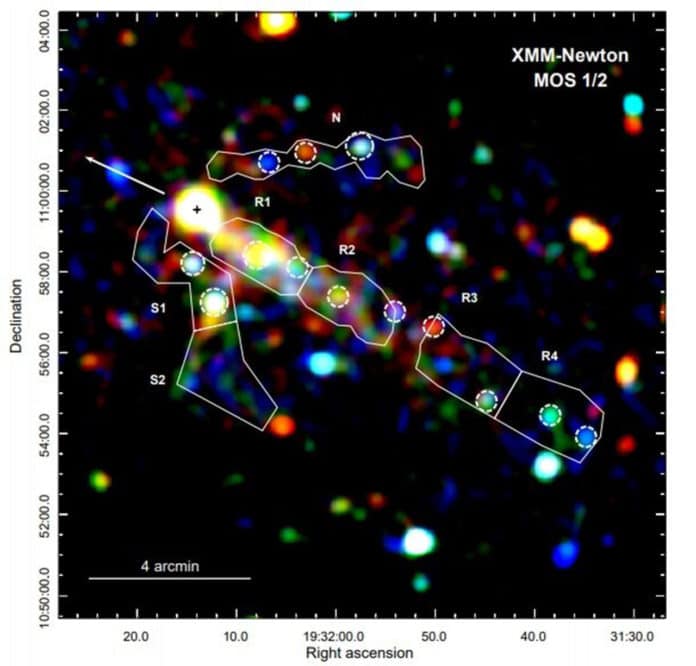PSR B1929+10 is one of the nearest pulsars to Earth, with a parallax distance of about 2,057 light-years from the sun. It has a spin period of 226.5 milliseconds and a projected velocity of 177 km/s. The nature of PSR B1929+10’s PWN is still poorly understood.
Recently, astronomers from South Korea and China have performed a deep X-ray spectral imaging on a PSR B1929+10. The study presents the most profound investigation of the system, revealing significant data about the emission from this PWN.
For the study, astronomers used data from XMM-Newton, with significant exposure of ∼300 ks, offering the most profound investigation of this system thus far.
They detected an X-ray axial outflow behind the proper motion direction, which was reported for by previous observations. They found that this outflow has an extent of about eight arcminutes, which is double the length evaluated by a past investigation distributed in 2006.
The X-ray emission of the axial outflow seems to be getting efficiently harder in the opposite direction of the pulsar’s proper motion.
The astronomers expect that the observed spectral hardening might be clarified by certain acceleration processes occurring along with this feature. They noticed that magnetic energy could be changed over into the kinetic energy of wind particles, which can bring about exceptionally proficient particle acceleration.
Besides the outflow, astronomers also detected two faint lateral outflows extending laterally with respect to the proper motion. Their orientations turned out to be similar to those observed in some other pulsars with PWM. The authors of the paper suggest that such features can result from polar outflows which are bent by the ram pressure.
Journal Reference:
- A deep X-ray spectral imaging of the bow-shock pulsar wind nebula associated with PSR B1929+10, arXiv:2004.14019. DOI: arxiv.org/abs/2004.14019
